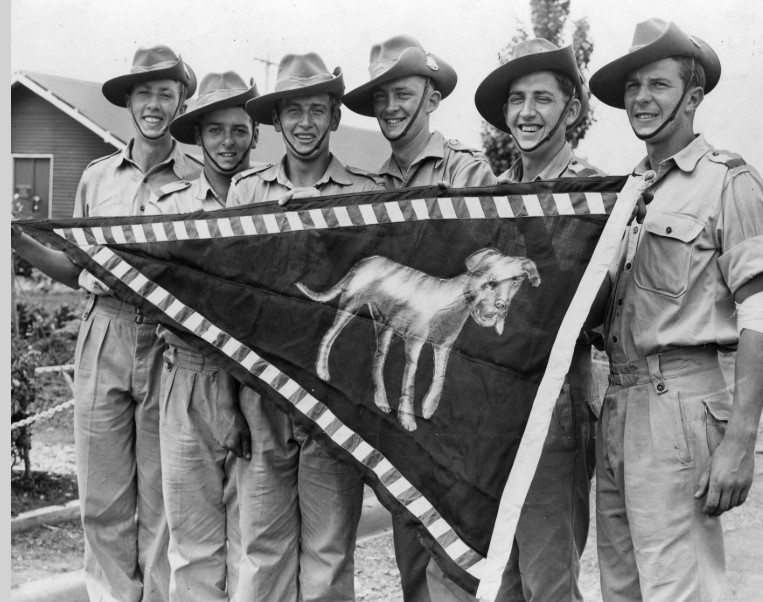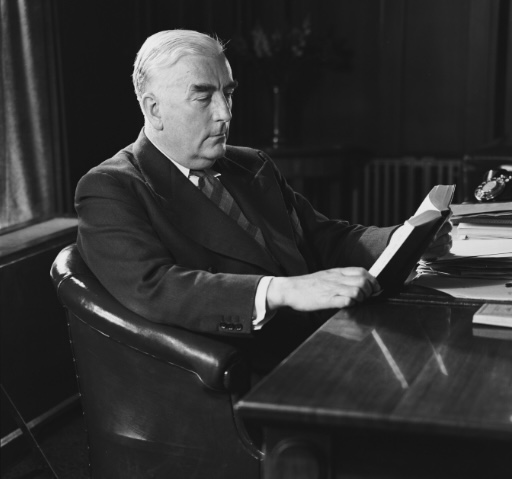On this day, 12 April 1951, the first call-up notice was issued under the Menzies Government’s new National Service Act. Introduced in the context of the Korean War and a suspicion that World War III could be imminent, the Act provided for the compulsory call-up of males turning 18 on or after 1 November 1950, for service training of 176 days, followed by 5 years on the Reserve of the Commonwealth Military Forces.
Those called up were given the freedom to nominate for their preferred service, but choosing the Navy or Air Force required volunteering for serving overseas, potentially in a warzone. Whereas opting for the Army gave servicemen the choice to limit themselves to home defence. Between 1951 and 1959 over 500,000 men were registered and 227,000 of them trained under the Act. Which was eventually wound up due to a combination of a lessening of geopolitical tensions towards the end of the decade, and also complaints within the ADF that training and supervising people who would not become full-time soldiers diverted valuable resources from where they were needed most.
Although national servicemen would see action on Navy vessels in Korea, and help supervise British atomic tests at home, the scheme proved nowhere near as controversial as its 1964 successor, which became intimately associated with the Vietnam War. In many respects, that war tainted the entire concept of national service, which had previously been an important part of Australia’s military preparedness since federation.
Indeed, the need to coordinate national defence had been one of the central issues raised by those arguing for the necessity of uniting the six Australian colonies into one democratic polity, and in the early federal parliaments national service was a topic of intense discussion. While a majority of MPs were in favour of some form of scheme, others offered liberal objections that it might imprint an unwanted militarism onto Australian national culture. Like future Liberal Prime Minister Joseph Cook, who responded to Billy Hughes’s strong advocacy for compulsory military training by arguing:
‘He seems to regard the proposal as one for the physical development and discipline of our growing population… and hopes thereby to get rid of certain qualities in the young Australians which, he says, are deplorable, but which I do not think are of as great moment as he imagines. I am aware that there is a certain amount of larrikinism in Australia… those characteristics which people deplore are the result of the natural rebound from the dull grey industrial Gradgrind existence of older countries. It is because of the greater freedom and the better conditions under which we live, that our young people show more blithesomeness and gaiety and animal spirits. Of course, a certain amount of discipline is required to impart steadiness to our national character, but I should be very sorry to see all those qualities which tend to make life happy and free, and glad, and spontaneous, disciplined out of existence’.
Despite such objections, legislation providing for a Universal Service Scheme was passed and began operation in January 1911. Which certainly helped with Australia’s military preparedness at the outbreak of the Great War, even though no conscripts would be compelled to serve in it. The scheme was finally wound up in 1929, largely due to budget cuts forced by the Great Depression. But also due to a widespread belief within the Scullin Labor government that World War I had been caused by an excess of militarism, and a consequent hope that future conflicts could be avoided by not engaging in it.
The outbreak of World War II proved such hopes forlorn and created a clear impetus for the resurrection of the scheme. Resulting in an announcement made on 15 November 1939 by Prime Minister Menzies, informing the public that under new national security regulations compulsory training and service was going to be reintroduced. It was under this scheme that Australian conscripts would fight in the Kokoda campaign, waged in what was then the Australian territory of Papua between July and November 1942. Before conscription was given a new legislative form by John Curtin, whose government passed an Act in January 1943 allowing for conscripts to serve in what was known as the South West Pacific Zone (covering the Philippines, Borneo and most of the Dutch East Indies). However, the legislation was deliberately designed to lapse after the war, hence Menzies needing to introduce new legislation in 1951.
Service under the 1950s scheme varied between the armed forces not only on the basis of compulsory overseas service, but also in how the mandated 176 days was divided up. Opting for the Navy involved 124 days of continuous training as a recruit, and then 13 days of training each year for 4 years in the Naval Reserve. Whereas an Army commitment was more spread out but long term, involving 98 days of continuous basic training followed by 14-day camps twice a year and 14 days of part-time parades over 2 years, then 78 days of training in the CMF over 3 years. Contrastingly, the Air Force required recruits to do all 176 days in one go, taking advantage of the extensive network of airbases that had been developed during the war under the Empire Air Training Scheme.
National service schemes were not unusual for the time period, with Clement Attlee’s Labour government in Britain having introduced its own National Service Act as early as 1948. Their subsequent survival has varied due to local circumstances, but with the threat of war sadly looming large on the horizon once more, there are a growing number of people calling for a return of compulsory military service. Using justifications that have varied remarkably little over the past century.
Sign up to our newsletter
Sign up for our monthly newsletter to hear the latest news and receive information about upcoming events.


